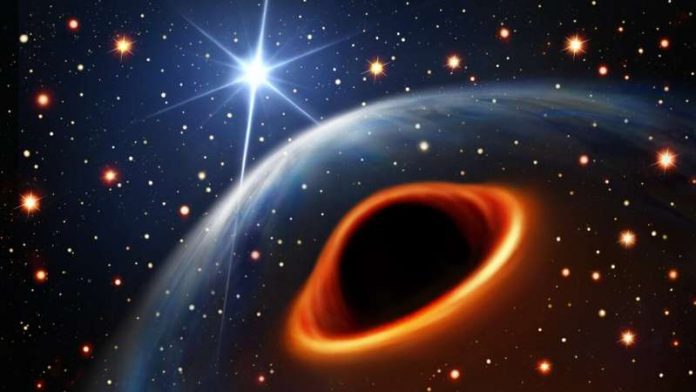
Astronomers have discovered a mysterious celestial object in the Milky Way using the MeerKAT Radio telescope
Located within a dense group of stars called a globular cluster, approximately 40,000 light years away, this enigmatic find challenges conventional astrophysical classifications.
NGC 1851 Characteristics
It weighs more than the heaviest neutron stars yet is lighter than the most ethereal black holes on record.
While observing, astronomers from institutions, including the University of Manchester and the Max Planck Institute for Radio Astronomy in Germany, discovered a cluster of stars named NGC 1851 in the southern constellation of Columba.
Utilising the MeerKAT telescope
The MeerKAT telescope’s sensitivity enabled the identification of an object in orbit around a rapidly spinning millisecond pulsar within the cluster.
Clocking in more than 170 rotations per second, the millisecond pulsar emitted rhythmic pulses resembling a cosmic timepiece. By employing pulsar timing, the researchers precisely measured the orbital motion of the pulsar and its companion, offering insights into the nature of the newfound object.
This discovery is particularly intriguing because the object inhabits what astronomers term the “black hole mass gap.” This is the transitional region between neutron stars, the remnants of collapsed stars, and black holes, gravitational powerhouses so intense that not even light can escape their grasp.
Possible pulsar-black hole
The discovery of a possible pulsar-black hole binary is a significant astronomical finding that could help us better understand the fundamental principles of astrophysics.
Ben Stappers, the UK project lead and Professor of Astrophysics at The University of Manchester, expressed the excitement surrounding the possibilities: “Either possibility for the nature of the companion is exciting. A pulsar-black hole system will be an important target for testing theories of gravity, and a heavy neutron star will provide new insights into nuclear physics at very high densities.”
The nature of objects within the black hole mass gap has puzzled astronomers for a while. This newfound celestial companion, positioned within this enigmatic region, presents a unique opportunity to unravel the mysteries surrounding these elusive cosmic entities.
The pulsar’s timing
Ewan Barr from the Max Planck Institute for Radio Astronomy, who led the study alongside colleague Arunima Dutta, compared the precision of their measurements to dropping an almost perfect stopwatch into orbit around a star nearly 40,000 light years away.
The regularity of the pulsar’s timing allowed for a meticulous determination of the companion’s characteristics, revealing it to be a dense remnant of a collapsed star with a mass exceeding that of any known neutron star yet falling short of the mass of any known black hole.
While astronomers cannot definitively categorise the newfound object as the most massive neutron star, the lightest black hole, or a novel stellar variant, they acknowledge the groundbreaking nature of their discovery.
Arunima Dutta emphasises, “Uncovering the true nature of the companion will be a turning point in our understanding of neutron stars, black holes, and whatever else might be lurking in the black hole mass gap.”
Editor's Recommended Articles
-
Must Read >> Space exploration and the nature of the divine













